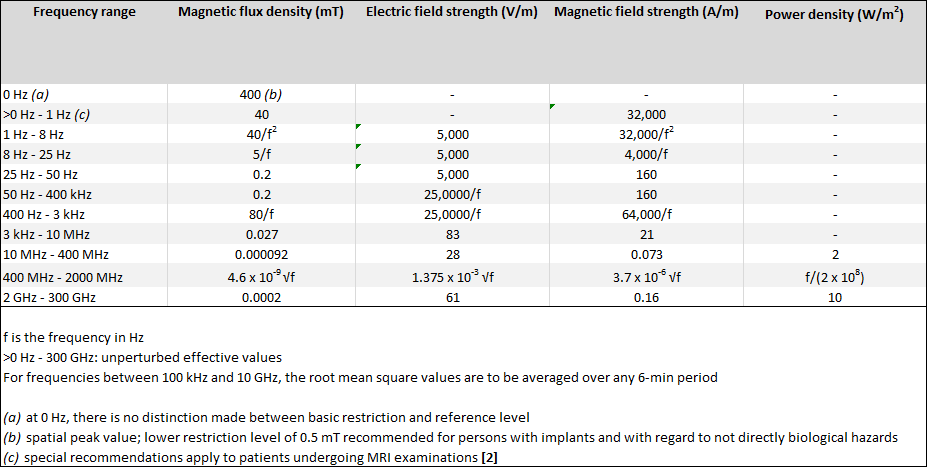Reference levels
Reference levels are limits that will ensure compliance with the recommended basic restrictions. They are not directly based on health considerations, but can be verified by direct measurements and/or by computational methods. They thus provide a practical way of exposure-assessment with regard to compliance with the basic restrictions (see Basic restrictions). Some reference levels are derived from the basic restrictions using measurement and/or computational techniques, and others considering the adverse effects of EMF exposure. If a measured value exceeds the reference level, it does not necessarily mean that the basic restriction is exceeded. It should then, however, be verified (e.g. by computer simulations) that the basic restriction will be met. In certain situations with relatively strong local exposure (e.g. with a mobile phone held to the human head) the reference level should not be applied. Here compliance with the local basic restriction should be assessed directly.
Depending on frequency, the following physical quantities are used to specify the reference levels of electric, magnetic, and electromagnetic fields (see also table “Reference levels”):
- 0 Hz (static fields) to 1 Hz:
Magnetic flux density (T), Magnetic field strength (A/m) - 1 Hz to 10 MHz:
Magnetic flux density (T), Electric field strength (V/m), Magnetic field strength (A/m) - 10 MHz to 300 GHz:
Magnetic flux density (T), Electric field strength (V/m), Magnetic field strength (A/m), Power density (W/m2).
For contact currents, the reference level is specified as maximal contact current (A).
The reference levels documented in the ICNIRP guidelines of 1998 and the EU Council Recommendation of 1999 were amended in the more recent ICNIRP guidelines of 2009, 2010 and 2014 for different frequency ranges between 0 Hz and 10 MHz. In Germany, the reference levels are valid according to the revised version of the 26. BlmSchV of 2013 (Ordinance on Electromagnetic Fields).

Special recommendations apply to pulsed signals (ICNIRP, p. 511, see note 5 in tables 6 and 7).